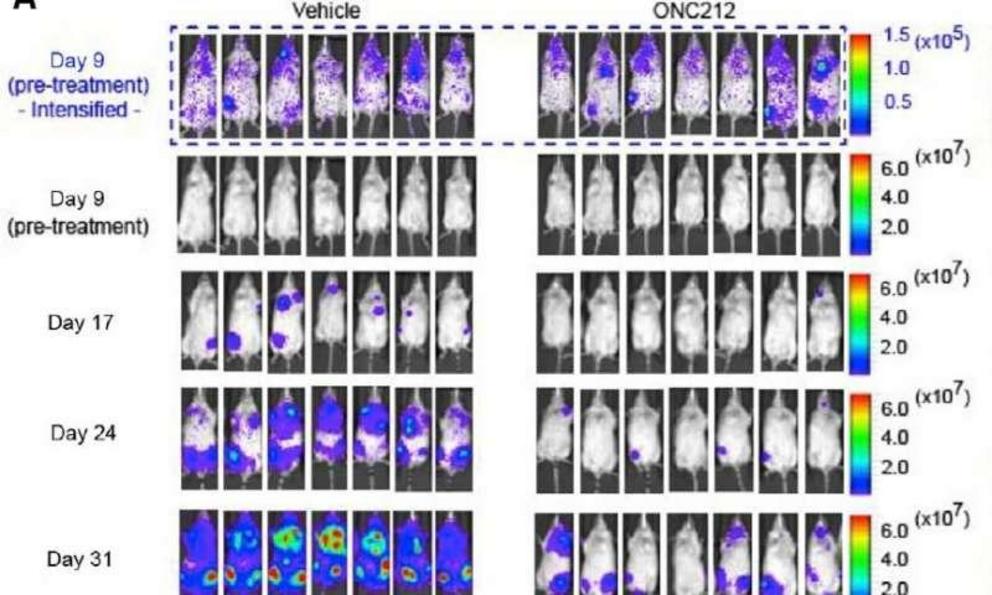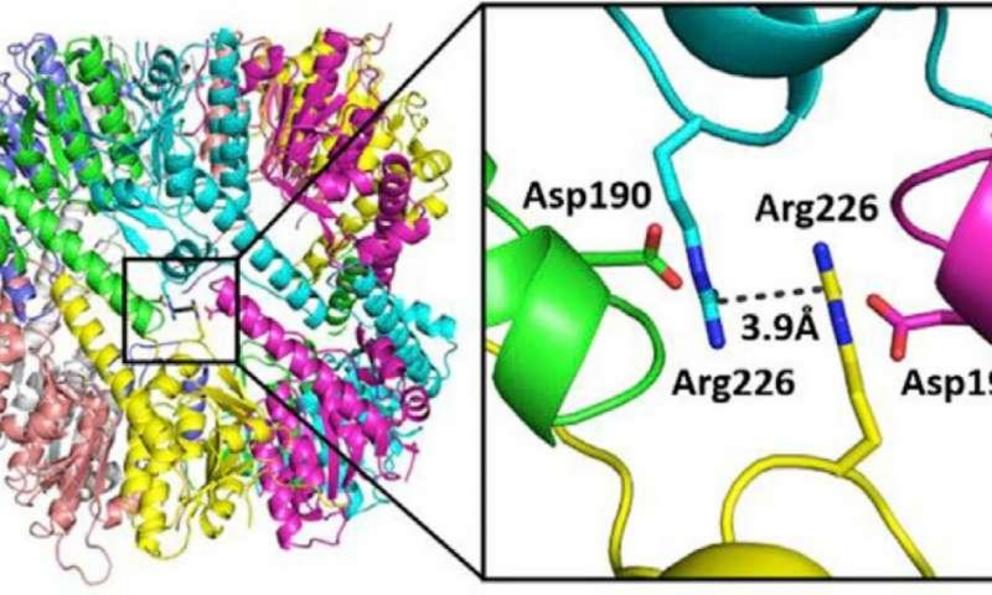Hyperactivated 'garbage disposal systems': revolutionary discovery in leukemia research
Interface of two heptamer rings in an apparently closed conformation of human mitochondrial ClpP.
Leukemia affects over 6,000 Canadians per year. A team of researchers used the Canadian Light Source (CLS) at the University of Saskatchewan to discover a new way to kill leukemia cancer cells. When the scientists hyperactivated the "garbage disposal systems" of leukemia cells, it caused the cancer to die.
The researchers believe this finding will transform the direction of cancer therapy by focusing on a protein that was previously believed to be impossible to target. Their study was featured on the cover of the journal Cancer Cell.
"It was a major advancement to visualize the structural biology through crystallography facilities at CLS and to prove conclusively that ONC201 binds and hyperactivates ClipP proteases to induce cell death," said co-author Dr. Aaron Schimmer from the Princess Margaret Cancer Centre and the University of Toronto.
The crystallography techniques at the CMCF beamline allowed the scientists to examine the structural biology of cells at the CLS.
"Even at a big cancer centre like MD Anderson, we don't have the capability to see the crystallized structure that pinpointed the direct binding of the protein at the atomic level," said co-author Dr. Michael Andreeff from the MD Anderson Cancer Center at the University of Texas.
Both research groups are excited to see the continued advancement of leukemia treatment as well as the potential for other cancer therapies.
 Measuring tumor burden in mice.
Measuring tumor burden in mice.
Andreeff will continue to explore the clinical benefits of this research on acute myeloid leukemia (AML), an aggressive form of cancer with a low survival rate. Meanwhile, Schimmer's team will work to further understand the role of mitochondria in leukemia and the best way to target them.
Schimmer noted that the collaboration of the two groups at the CLS produced impactful results that are significantly greater than what they could have achieved independently.
He hopes that this discovery will move cancer treatment one step closer to the elusive cure.
More information: Jo Ishizawa et al. Mitochondrial ClpP-Mediated Proteolysis Induces Selective Cancer Cell Lethality, Cancer Cell (2019). DOI: 10.1016/j.ccell.2019.03.014
Journal information: Cancer Cell
Provided by Canadian Light Source

